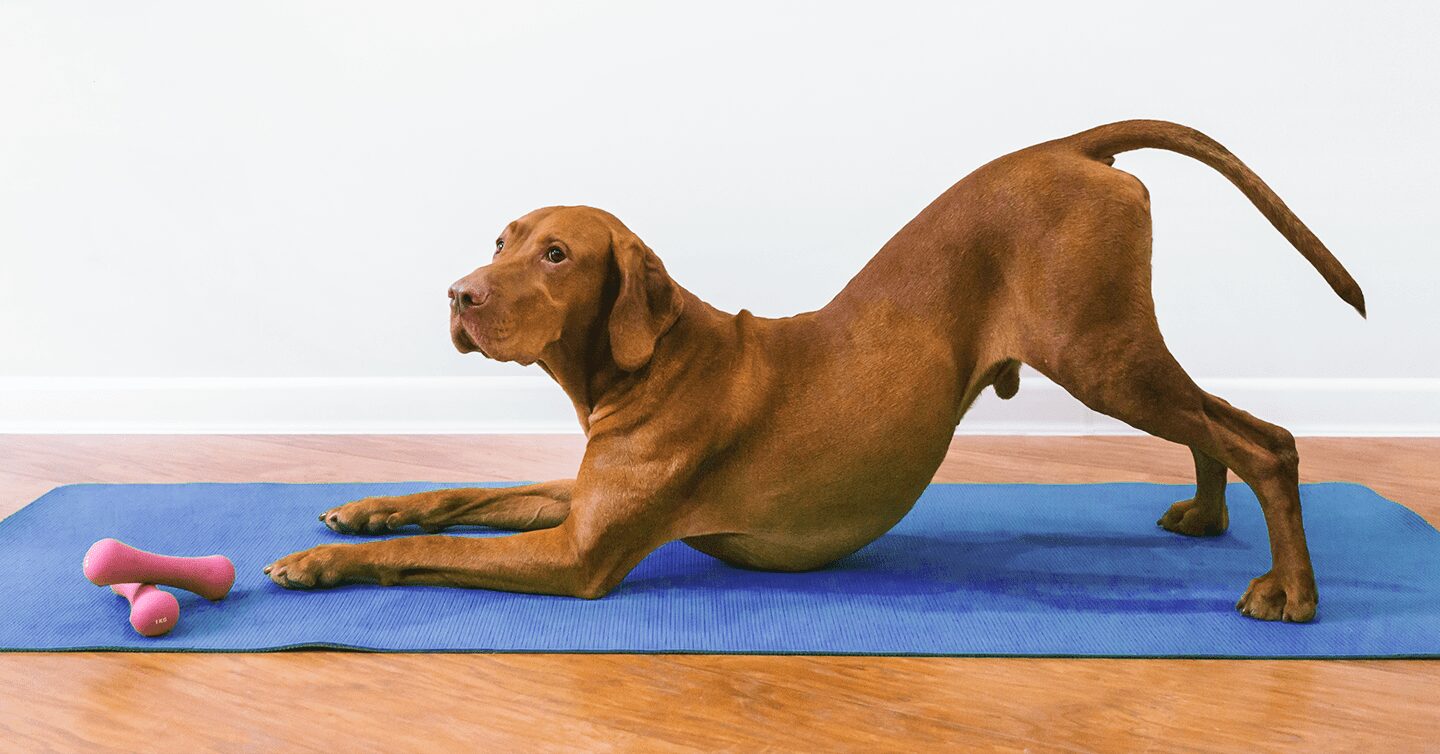We’ve all been there and some of us are, unfortunately, still hanging in there. And like many of us pet parents who gained weight during the height of the pandemic, our pooches have also packed on pandemic pounds and become overweight.
According to research done by Pumpkin and Fi, a survey on pandemic weight gain behaviors of pets and their owners showed 36% of pet parents reported their pup gained weight during the pandemic, and 56% said their pets’ weight gain correlated with their own. Work from home has meant “eat more at home” for pet parents, increasing the number of table scraps and treats their pets gobble up.
If you’re looking to shed those pandemic pounds, here are five innovative ways both you and your dog can kickstart your weight loss journey together!
1. Start with smartphone apps!
There are a variety of apps to help you coach your dog to lose weight in a safe and controlled way. One such app, DogDiet, allows pet parents to customize their dogs’ diets to safely achieve a target weight. It includes a daily activity log that can sync up with your Fitbit or smartwatch to track your steps as well!
Another app worth exploring is PETABLE. This app allows you to plan your pet’s target weight and or input the body condition and current weight and you’ll see your pet’s calculated healthy weight, so you know what to target. It also allows you to log your dog’s progress. You should follow up with your veterinarian to get additional nutritional advice or a planned exercise regimen. Don’t forget to also document pictures of your pet during their weight control program so you have clear “before and after” images. You can then show these to anyone, including your furbaby, for extra motivation!
Just remember, it’s important to consult with your veterinarian, just like you would consult with your doctor, to ensure a safe and effective weight loss program.
2. Try furkid fitness wearables
Fitness wearables not only help you track your calories and steps, but they can also track your dog’s! Pet-safe wearables, like Invoxia’s wearable collar, function like an Apple Watch for your best fur friend, combining AI data analysis with biometric sensors, accelerometers, and neural network capabilities. The associated app helps owners monitor their dog’s health and whereabouts at all times.
This biometric collar, developed with input from veterinary specialists, also identifies health problems before any visible signs surface. The collar works by measuring respiratory and heart rates and detecting odd behavior. From there, it can send an alert to the app, facilitating pre-emptive treatment of a wide range of disorders. The truth is even the healthiest dogs can succumb to illnesses throughout their lives, and treatment can be expensive – which is why getting pet insurance as early as possible is so important.
3. Take an agility class
Agility classes are another fun way to help your dog lose weight. Whether you set up obstacle courses yourself or take them to a class with professional trainers, letting your dog run, jump, and more, can help them stay active while also teaching obedience. Both you and your pooch will stay nice and fit!
4. Puzzle treats are pawesome
First off, I’m not anti-treats – I’m anti-junk treats. If you’re going to give your pets extra goodies, make ‘em count. Too many pet treats are what I call “calorie grenades” – laden with sugar and fat, blowing up our pet’s waistlines and destroying their health. The pawesome puzzle, for example, is a fun way to engage your dog to eat low-calorie treats or veggies placed in there!
Choose low-calorie, no-sugar goodies that provide a health benefit. I like single ingredient treats such as sweet potato, salmon, and blueberry bites or functional treats that provide a bonus such as helping to keep teeth clean or promoting mobility. Whatever treats you give, be sure to count those additional calories. Many pet owners feed their dogs a proper amount of food, but sabotage their efforts by adding one or two snacks throughout the day. As few as 30 extra calories per day means your pet gains over three pounds in a year.
I even suggest pet parents run around the house and hide treats for their dog. Not only does this peak your dog’s interest level but both the dog and pet parent get a good cardio workout!
5. Workout with your dog
Yes, that’s right. There are many safe and fun exercises both you and your dog can do. If your dog is obese, this may take some “building up” to get where you both can feel you’re effectively losing weight. Believe it or not, doggy yoga is definitely a thing. It’s actually called Doga and it’s just as good for your dog as it is for you.
If you’re looking to spice up your usual morning walk with your dog, try running for 30 seconds and then do a strengthening exercise. For instance, run for 30 seconds then do squats. Every time you go down, give your furry friend a scratch or a rub, that way they can be brought in on the strength training too.
Swimming with your dog may be one of the best ways for an overweight dog to safely lose weight without causing damage to their joints. Just be sure to have a life preserver on them!
Closing thoughts
Sometimes we don’t know if our animals will become overweight or obese. That’s why I’m a huge advocate for pet insurance. It’s better to be proactive than reactive when it comes to a disorder that can lead to serious and costly medical care.
Remember, pet obesity is a disease that is reversible. We know how obesity can lead to many serious health effects from cardiac, respiratory, orthopedic, endocrine and metabolic disorders just to name a few. So getting them back in tip-tail shape should be a priority!




